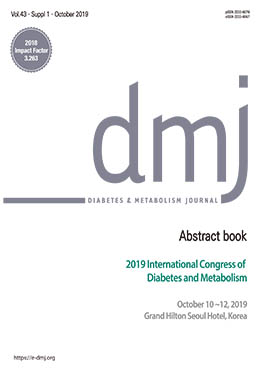Objective: We evaluated the risk of incident type 2 diabetes according to the cumulative exposure to obesity or metabolic syndrome (MetS) during annual or biennial health examinations.
Methods: The Korean National Health Insurance Service datasets of preventive health examinations from 2002 to 2017 were used for this retrospective longitudinal study. The risk for type 2 diabetes was analyzed according to the cumulative exposure to obesity and MetS who underwent four health examinations from 2009 to 2012 or 2013.
Results: During the four examinations, 28.56% and 17.86% of the subjects showed fluctuations in their metabolic health state and obesity, respectively. During 14,299,943.82 person-years of follow-up, there were 98,950 new type 2 diabetes cases. In the multivariate adjusted model, the risk for incident type 2 diabetes increased with the increase of exposure to MetS [HR (hazard ratio) (95% CI): 2.923 (2.857-2.990), 4.964 (4.853-5.077), 7.462 (7.301-7.626), and 12.241 (11.998-12.489) in groups with number of exposures one to four, respectively] and obesity [HR (95% CI): 1.602 (1.558-1.647), 1.866 (1.813-1.921), 2.248 (2.192-2.305), and 3.457 (3.407-3.508) in groups with number of exposures one to four, respectively].
Conclusion: Metabolic health and obesity may fluctuate within a relatively short period of four to five years. Although the impact was much greater for MetS than for obesity, the cumulative duration of both obesity and MetS was associated with an increased risk of incident type 2 diabetes in a dose-response manner. Therefore, continuous maintenance of metabolic health and normal weight is crucial to prevent type 2 diabetes incidence.




